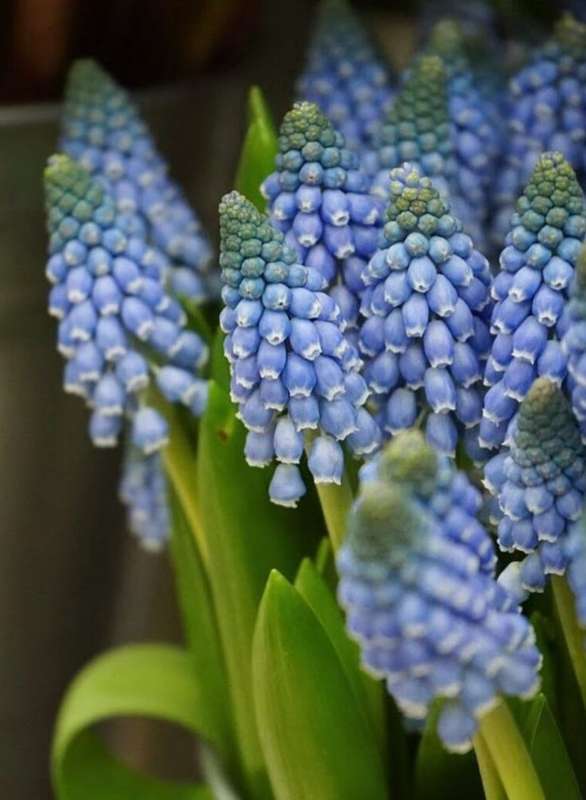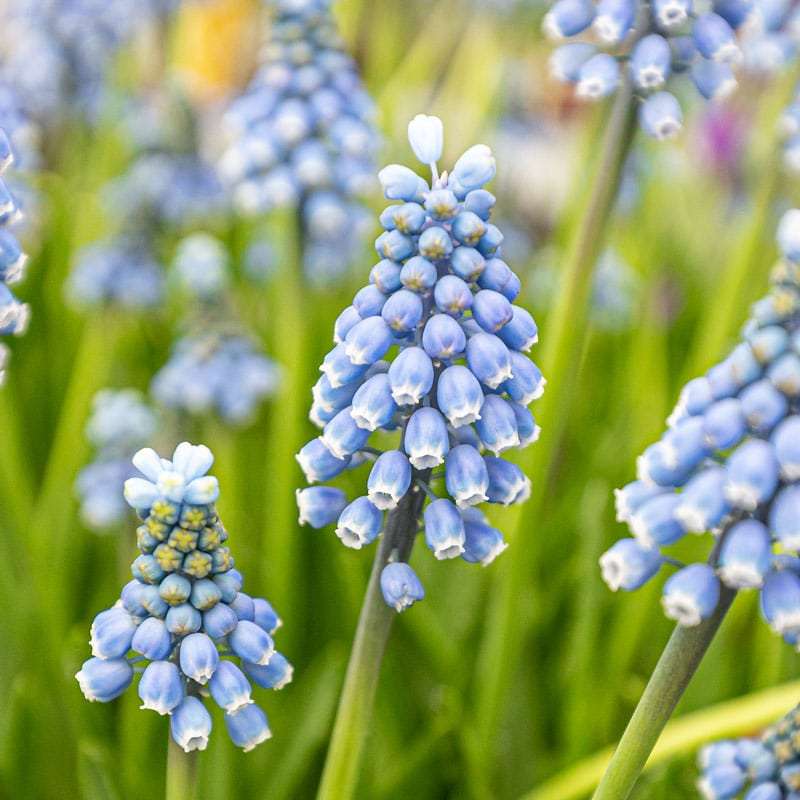





Muscari - Blue Pearl - 20 bulbs p-pack
Check my rate
| Main centres: | 1-3 business days |
| Regional areas: | 3-4 business days |
| Remote areas: | 3-5 business days |






| Main centres: | 1-3 business days |
| Regional areas: | 3-4 business days |
| Remote areas: | 3-5 business days |
Muscari 'Blue Pearl' is a delightful and vibrant variety of grape hyacinth, known for its striking blue flowers that bloom in spring. Muscari is a hardy, low-maintenance bulb that adds beauty and charm to gardens in South Africa, especially in flower beds, borders, or as part of container plantings. Here's how to grow and care for Muscari 'Blue Pearl' in South Africa.
Climate:
Muscari 'Blue Pearl' grows well in a variety of South African climates, from temperate to Mediterranean regions.
It thrives in mild winters and moderate summers, making it ideal for regions like the Western Cape, KwaZulu-Natal, and parts of the Eastern Cape.
It can tolerate light frost in winter, as it enters dormancy during the coldest months.
Sunlight:
Prefers full sun but will tolerate partial shade.
For optimal flowering, ensure that the plant receives at least 4—6 hours of sunlight daily, especially in the spring.
In hotter climates, it can benefit from afternoon shade, particularly in areas with intense summer heat.
Soil Requirements:
Muscari 'Blue Pearl' prefers well-draining soil with a slightly acidic to neutral pH (pH 6.0—7.0).
It thrives in loamy or sandy soils, rich in organic matter.
Avoid heavy, waterlogged soils, as they can lead to bulb rot. Improve soil drainage by adding organic compost or sand if needed.
Best Planting Time:
Autumn (April to May) is the ideal time to plant Muscari bulbs in South Africa for spring flowering (August—September).
Bulbs planted in early spring can still bloom in the same year but may have a slightly delayed bloom time.
Depth & Spacing:
Plant bulbs about 5—8 cm deep in the soil, with the pointed end facing up.
Space bulbs about 5—10 cm apart to allow for natural spreading and avoid overcrowding.
For a more compact look, you can plant them in clusters or massed plantings for a dramatic effect.
Container Growing:
Muscari bulbs can be grown in containers as well. Use a well-draining potting mix and ensure the container has drainage holes.
A large container (at least 20 cm deep) will allow the bulbs to grow freely and prevent waterlogging.
Growing Muscari in containers is ideal for patios, balconies, or small spaces.
Watering:
Water regularly after planting to help the bulbs establish roots, but avoid overwatering as the bulbs can rot in waterlogged soil.
Once established, Muscari does not require frequent watering and is relatively drought-tolerant.
Water lightly in spring as the bulbs begin to sprout, but reduce watering once the flowers fade and the plant enters dormancy.
During dormancy (late spring to summer), allow the soil to dry out.
Fertilizing:
At planting: Incorporate a slow-release fertilizer or compost into the planting area to ensure the bulbs have the necessary nutrients to grow.
During the growing season, you can apply a balanced liquid fertilizer every 2—3 weeks to encourage strong growth and vibrant flowers.
After flowering: Apply a low-nitrogen fertilizer to help the plant's leaves die back naturally and store energy in the bulbs for next season's growth.
Mulching:
Apply a light layer of mulch (e.g., compost, bark, or straw) around the base of the plant to retain moisture and protect the bulbs during winter.
Mulch also helps to suppress weeds and maintain consistent soil temperatures.
Bloom Time:
Muscari 'Blue Pearl' produces dense clusters of vibrant blue flowers in spring, typically from August to September.
These flowers bloom on slender stems, attracting pollinators such as bees and butterflies.
After Flowering Care:
Deadhead spent flowers to prevent seed formation, which encourages the plant to focus energy on developing strong bulbs for the next season.
Let the foliage die back naturally after flowering. This process allows the plant to store energy in the bulbs for future growth.
Do not cut back the leaves until they have fully yellowed and dried out, as they continue to provide nutrients to the bulb.
Lifting & Storing Bulbs (Optional):
Muscari 'Blue Pearl' bulbs can be left in the ground year-round in most areas of South Africa. However, in regions with very wet winters or excessive rainfall, you may want to lift the bulbs after they die back.
Store the bulbs in a cool, dry place until it's time to replant them in autumn.
Common Pests: